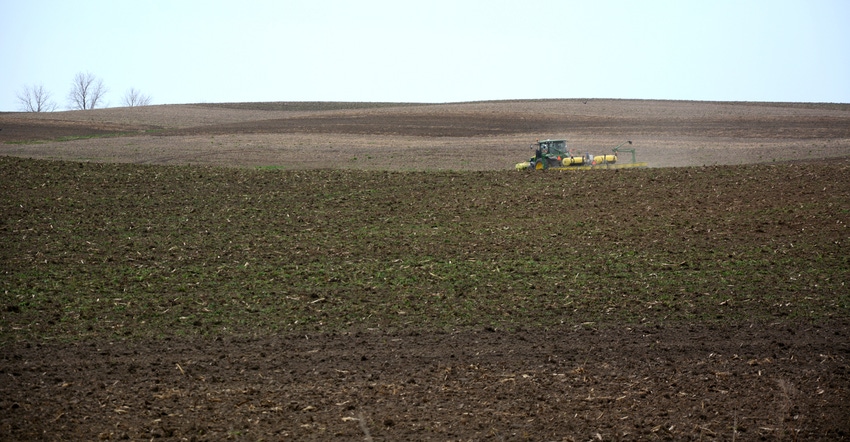
Dry spring weather conditions have helped farmers get seed in the ground. However, with lack of rain, many are wondering if their application of preemergence herbicides has been wasted.
University of Minnesota Extension crop specialists have been getting calls from growers concerned about early-season weed control. As challenging as it is to wait and see, they are reassuring growers that the pre-applications are still active in the soil, and suggesting growers scout for early-season weeds and have a post-application ready to go if needed.
“When it rains, we’ll get the benefit of what is applied,” says Tom Peters, Extension sugarbeet weed scientist with U-M and North Dakota State University. “Then we will need to implement a strategy for any weeds that have emerged.”
Debalin Sarangi, U-M Extension weed scientist, agrees and suggests scouting fields for weeds 14 days after applying pre-herbicides. Know what weeds you have, so an effective tankmix can be applied, he adds.
Both Extension specialists participated in last week’s U-M Field Notes webinar, a Wednesday morning online meeting where farmers can connect and ask questions about crop conditions and management (see U-M Field Notes webinars).
Most herbicide chemistries are resilient from photodegradation and volatilization and await rain for activation. A half-inch of rain usually is enough, but when the soil surface is very dry, more rain is needed.
“You want soil moisture 1 to 6 inches deep for [herbicide] control,” Sarangi says. That might take more than one rainfall, depending on precipitation totals.
If timely rain doesn’t come, growers might consider going into their fields with a rotary hoe or harrow to move some of the herbicide off the soil surface and put it in a better location, for when precipitation does occur. Some Extension specialists recommend operating rotary hoes at a high speed to control weeds effectively that have germinated but not yet emerged.
However, Peters says he doesn’t think a rotary hoe or an interrow crop cultivator works adequately.
“If you have an old-fashioned harrow or drag harrow, and your crops aren’t up yet, that might be a possibility to get soil on top of herbicide,” Peters says. “In my opinion, we have to be very careful when going with those kinds of options.”
Growers also have been asking about reach-back or reactivation of pre-herbicides, a practice that farmers once used to prompt residual herbicides to kill emerged seedlings after a rainfall. Reach-back depends on the size of the weed and the type of chemistry used, Sarangi says. Some herbicides, including Group 27 herbicides, such as Balance Flexx and Acuron, can work. But if weeds already have one leaf per plant, do not expect control.
More herbicide strategies
Extension specialists offer these additional herbicide strategies:
Be ready with a postemergence application. If weeds emerge before herbicide activation, a post-application will be needed to clean fields up before weeds exceed 2 to 4 inches in height.
If you didn’t apply a pre- and are planning for an early post-application, watch the weather. Apply a tankmix of post- and residual herbicides before it rains.
Layer herbicides. Layering a pre-herbicide — where a pre-residual herbicide is applied at planting, and then, about 30 days later, applying Group 15 herbicides, such as Dual II Magnum, Outlook or Warrant — can boost control of weeds. This is effective on weeds like waterhemp that have an extended emergence period into early to mid-July. If you trust your post-herbicide — such as Liberty, Enlist or Xtend — to control emerged waterhemp, you may be able to stretch the application window beyond the 30-day recommendation. Minnesota researchers have pushed that up to 42 days. Note, though, that rainfall is still essential for activation.
The bottom line: Continue scouting fields now and through the growing season, they add.
Sarangi recommended scouting fields 14 to 21 days after pre-applications.
“If you see weeds are coming up, definitely start planning for your post-, because if the weeds are more than 4 inches tall, you will have no luck controlling them using any postemergence application,” Sarangi says, adding, “This year would be one [where] you have to be really proactive scouting your field.”
About the Author(s)
You May Also Like






